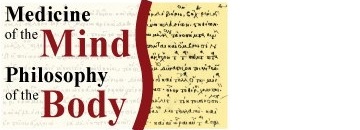Synchronizing the Body in Ancient Medicine and Philosophy
Within the Einstein Center CHRONOI (https://www.ec-chronoi.de/) and with the financial support of the Einstein Foundation (https://www.einsteinfoundation.de), the Alexander von Humboldt Professorship in the academic year 2023-24 conducts a research project on the theme “Synchronizing the Body in Ancient Medicine and Philosophy”.
The project focuses on ancient medical and philosophical ideas about synchronicity of the body with the environment and with the circumstances affecting its health and well-being; and on synchronizing as the attempt to bring about, manage, influence and manipulate that synchronicity.
In this connection, the CHRONOI fellows working within the project study ancient views on the body under three aspects: 1) the healthy body; 2) the gendered body; 3) the sick body.
1) The healthy body (Giouli Korobili)
In ancient medicine and natural philosophy, living bodies and their functioning were believed to be subject to specific time cycles, intervals and rhythms, which were related to similar time patterns in the external world surrounding them. From the fifth century BCE onwards, early Greek philosophers and medical writers developed cosmological and biological theories according to which processes and time sequences in the macrocosmos of the universe and in the microcosmos of human and animal bodies were closely related in ways that went further than just parallelism or analogy. Philosophers such as Aristotle tried to spell out the causal mechanisms underlying this synchronous relationship. And medical writers such as the authors of Airs, Waters, Places and Regimen (two of the medical writings transmitted under the name of Hippocrates) argued that health and well-being are constituted and enhanced by synchronicity between the body and the universe. They drew the consequences of this for medical theory and practice by stressing the importance of ‘living according to the seasons’ for the preservation and enhancement of human health. Consequently, in medical dietetics, diagnosis and prognosis, great attention was paid to the study of cosmic cycles, weather phenomena, astronomy, meteorology and the environment in general.
2) The gendered body (Kassandra Miller)
In ancient medical and philosophical views about synchronicity beween the body’s time cycles and those of its surroundings, special attention was paid to differences between male and female bodies. Extensive discussion of the internal and external factors affecting the temporal aspects of menstruation, conception, pregnancy and menopause, and of attempts to influence these, can already be found in fifth and fourth century BCE gynaecological texts transmitted under the name of Hippocrates and also in Aristotle’s biological works; in the Imperial period, the Gynaecia by the Methodist doctor Soranus provides an invaluable source of further information. While some of the ideas in these texts were based on observations of gender specific physical and physiological features, others had less clearly empirical justification and seem to reflect broader cultural attitudes and values embedded in Greek and Roman society.
3) The sick body (Annette Heinrich)
Like health, disease was believed to display natural patterns, rhythms and time cycles, whose analysis and understanding were the subject of intense medical and philosophical engagement and debate. The dynamics of disease processes presented major challenges to doctors and their patients: a categorical distinction was made between ‘acute’ and ‘chronic’ disease, the former requiring speedy, often immediate action, while the latter called for long term therapeutic planning, in which the co-operation of the patient was considered of vital importance for the success of the therapy. ‘Synchronizing’ here meant adjusting the therapy to the disease’s development during the treatment, which required careful time-keeping. In medical literature ranging from the Hippocratic writings in the fifth century BCE, through to Galen’s therapeutic works to the late ancient Methodist author Caelius Aurelianus, we can see elaborate, meticulous therapeutic regimes being spelled out in which time factors, timing and time-keeping are explicitly considered in relation to the course of the disease during the treatment.
Ancient discussions of these three themes were characterized by debate, diversity and disagreement, both in terms of the ideas and the methods by which they were arrived at and the arguments by which they were justified. This diversity will explicitly be considered in the project. One of the research questions of the group will be to what extent development and change in these ideas and methods can be explained in relation to social and cultural changes in the wider context of the ancient world.
